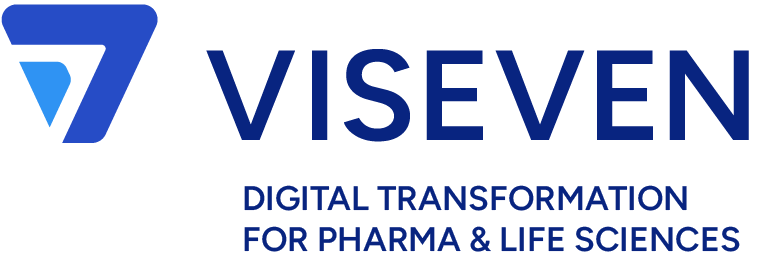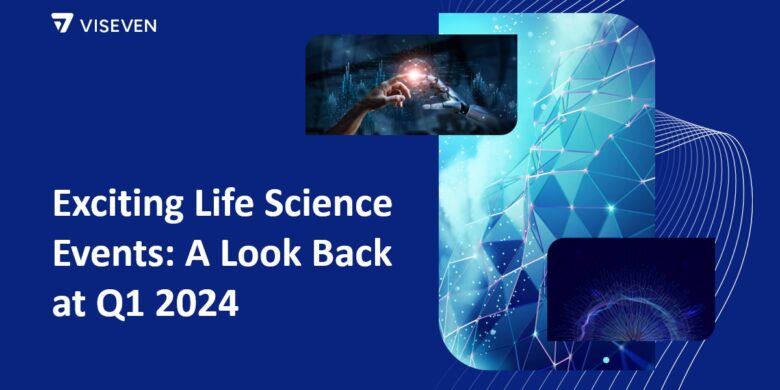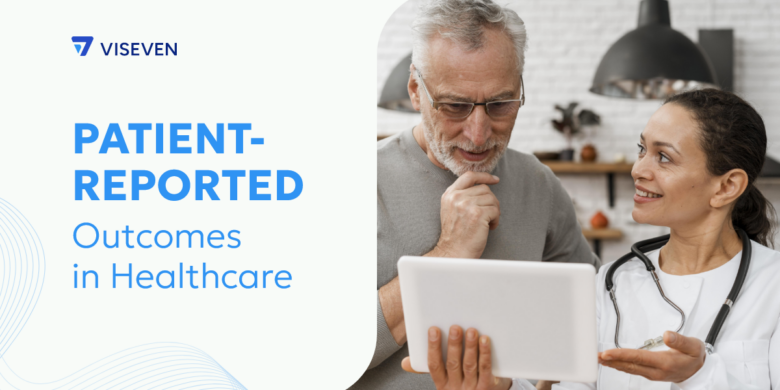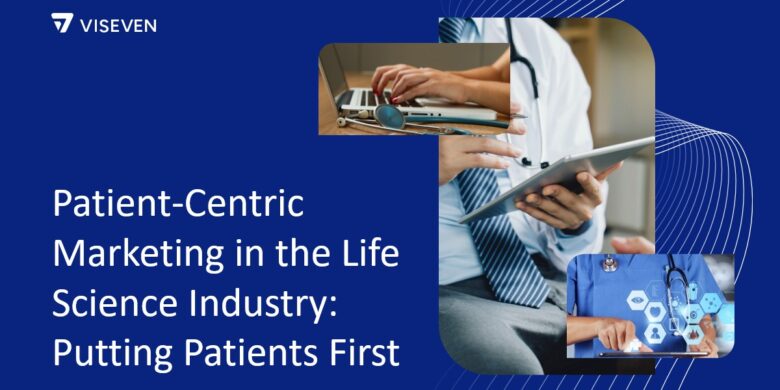A look from inside eyeforpharma 9th Annual Marketing and Customer Innovation Europe, 2019
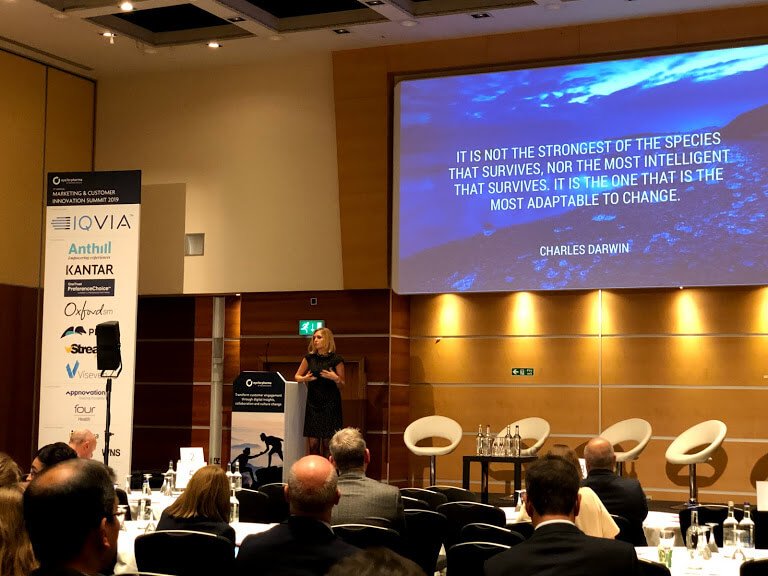
LONDON, October 2019 – Of enough weight in pharma and life sciences world to deserve the status of Reuters event, eyeforpharma is huge. In reality, to get the full value of the gigantic exchange of insights from leading enterprises, one can only be advised to travel and attend the event in person. As part of the pharma digital innovation community, we at Viseven team have taken it as our tradition to cover at least the most breathtaking presentations here – and this year’s event is not an exception. However difficult it has been to decide what to select to fit into this brief overview.
The driving force behind it all was expressed in one powerful slide, in a presentation delivered by Maria Raad, VP Customer and Digital Strategy at Janssen (and we’ll return to her excellent speech in a few moments):

Oh yes, there is change in the way pharma is expected to interact with the stakeholders. Much change. The entire event was, in a way, centered around how to cope with it, and what successful cases can already be shown.
Ensuring customer experience that is really valuable
Gone are the times when CX was measured in terms of how digitally advanced it was. Now, with other industries providing exceptional customer centricity, healthcare and pharma are seriously challenged with expectations. Just spectacular digital tech is no longer sufficient – patients and HCPs alike want to see the real value tech can provide.
This is where the notion of added value gains important – and Anders Dyhr Toft of Novo Nordisk talked exactly about that. Amid the global diabetes pandemic, the company introduced added value in the form of digital health solutions.
Anders Dyhr Toft from Novo Nordisk up now on Digital + Health “it’s not about the App it’s about the (patient) journey #efpmarketing pic.twitter.com/k5RSnIfk9D
— Philippe Kirby (@PhilippeKirby) October 15, 2019
These allow to expand focus beyond the prescription decision-making process by taking into account the real customer journey. The app-centric thinking has shifted to customer-centric. The importance of thinking in these terms was also highlighted by Philippe Barrilon, Takeda, in his presentation on CX measurement. In a stunning real-world insights collection, he presented the fact that once the HCP’s satisfaction with the journey becomes definitive, there’s a 2.7x increase in the likelihood to prescribe. The smart manager needs to consider the actual touchpoints along that journey and think of personalization – something that Christian Scheuer of LEO Pharma also stressed.
“Align the existing touchpoints before innovating” was one of the ideas in the presentation. In practice, this was achieved by providing reps with BI dashboards that show every touchpoint for any specific HCP – thus providing the flexibility and personalization to adapt to the real, non-linear journey.
The power of collaborations, once again
Collaborations in wide, cross-functional teams – as well as pharma-stakeholder collaborations – are a recognized necessity if only we want to bring the industry to true customer centricity. One notable aspect of this approach was solution co-creation with the customers. For example, the strategy devised by Novo Nordisk (which we have already mentioned) also involved services co-creation, and Louise Lauridsen, Digital Channel Manager, Europe at Bristol-Myers Squibb also presented a collaborative approach. Starting from the dismal figure of 11 minutes that is the average rep call duration in Spain, she emphasized the need to tailor the materials to the audience. As one of the stages in the cycle, they include workshop with the customers.
This same presentation also featured the practice of a large cross-functional team focused on providing the truly patient-centric solutions. The topic was touched in a panel talk on cross-department collaboration (marketing, digital, sales, medical and IT), with Paul Simms, Bharat Tewarie, Anders Dyhr Toft and Dana Viger participating.
It’s already here: AI bearing fruit
We promised at the beginning we’ll go back to what Maria Raad had to say. There were 4 trends distinguished in the presentation (Big data, empowered patients, better disease interception and more personal engagement). Behind all four, AI featured prominently:

Among all the applications of artificial intelligence that are already the working reality today, there’s one on which Roger Domecq, Head of CRM and Sales Transformation at Novartis Spain, delivered a practical case: AI in CRM. The solution works by analyzing previously assembled data and generating suggestions for reps to arrange for their next activities facing the customer.
The important building blocks for making suggestions – mixing drivers and channels. A way to bridge #marketing and #sales. @Novartis @eyeforpharma #efpmarketing pic.twitter.com/p8zFwmmcgV
— Oksana Matviienko (@MatviienkoO) October 16, 2019
Another success case of using AI was presented by Darren Frey, Senior Data Scientist at Sanofi in the context of predictive analytics. The method demonstrated involved precise short-term forecasting based on social media and sales data and processed by AI. The approach allows at least a 30% increase in accuracy (i.e. from 30 to 60%).
How not to get lost in data and processes?
An important part of digital transformation is making sure the organization does not get overwhelmed by the expanded horizons. A panel talk with experts from Pfizer, Novartis, Lundbeck and Sanofi was dedicated to customer insights and selecting the right customer insights for analysis.
The Janssen presentation, mentioned above, included a call to link data to value provided to the customer.
The splendid speech by Sarah Rickwood, Vice President, European Thought Leadership, IQVIA, was dedicated to launching excellence. Analyzing the evolution of launches starting from as early as 1995, they defined 6 stages on the way to the present-day complicated environment. This was combined with an overview of the past, present and future landscape and what implications it has for a successful launch.

Some valuable insights shared by Sarah Rickwood, now let’s make them actionable! @IQVIA_global #efpmarketing pic.twitter.com/7WrvimLPsP
— Philippe Kirby (@PhilippeKirby) October 15, 2019
As an efficient approach to efficient launch excellence, Sarah Rickwood suggested the FAAR model, with the formula “Be Focused, Actionable, Aligned and Realistic”.
Disrupt but don’t interrupt. Here’s what a future excellent launch will look like @IQVIA_global #efpmarketing pic.twitter.com/sdlSvTlPc0
— Viseven Digital Content Factory (@viseven_CLM) October 15, 2019
Francois Motyl, Global Digital Governance Lead at Novartis, presented an approach to end-to-end governance of customer experience.
Omnichannel transformed
The need to provide a truly omnichannel customer experience is clear when you consider that no one channel can substitute or supersede the others. In HCP engagement, even with the plethora of channels that pharma is now trying out, HCPs still use a vast array of other information sources. We have mentioned how Louise Lauridsen of BMS referred to the shrinking rep call times, but her presentation also included an assessment of sources of information, where reps are in Tier 2, at 39% rates. This is indicative of their role as just one channel in the large landscape.

This landscape is expanding. Cyril Mandry, Senior Marketing Director, MSD spoke of social media as a powerful means of communication. 60 to 80% of the audience are on SM, and 93% buying decisions are influenced by it, so pharma has at least 4 opportunities here: marketing, social selling, employment activities, and developing reputation. A memorable quote inspired by the SM setting was simply this:
Engagement is earned, not bought.
This, according to the presenter, implies the need for a long-term content plan. Another channel introduced with customer journey in mind was chatbots (discussed by Hannah Thompson and Kym Jacks-Bryant of Norgine).

Naturally, this huge landscape is to be consistent and the channels should be aligned with one another – this is why “multichannel” is now becoming “omnichannel”, the difference being that integrated experience provided by the latter. This requires a smart content strategy powered by good command of tech.
Stacey Berold-Kutscher of Ferring presented an original approach to engaging HCPs via popular digital networks. Reducing the team on the company side to just 3 members – Pharma Brand Lead, Digital Brand Lead and Medical Advisor – leading a blog and involving patients and KOLs, as well as providing downloadable content, they achieved considerable results.
Downloadable content (diaries), videos, games for patients and how it performed – the case from @ferring @eyeforpharma #efpmarketing pic.twitter.com/n4Yk3igeOu
— Oksana Matviienko (@MatviienkoO) October 15, 2019
Managing the omnichannel strategy that comprises multiple touchpoints, all of them personalized and providing added value also requires a fair share of proficiency working with content. The conventional way of creating content with an agency here and there is becoming dangerous. Where is the guarantee that the content created in silos will stay not just compliant, but also relevant to its place in the funnel?
Rethinking the way content is created and managed across channels is imminent. We at Viseven Group are aware of this fact and present the modular COPE – Create Once, Publish Everywhere approach. Here, content exists in the form of flexible modules that represent a core idea with supporting information – the value item, as well as metadata. Importantly, modules exist without channel-specific limitations, so that one module can be theoretically used in a website, email, app, eDetailing presentation, landing page, etc.
With the help of business rules, modules can be assembled into channel-specific templates, and thus provide the necessary level of personalization. The possible combinations yield a spectacular number of available content items to be constructed – and used at lighting speed whenever and wherever required by the audience needs.
To know more about what modular omnichannel content practices Viseven can recommend and implement, don’t hesitate to contact our expert in the field.
P.S. If you are interested in what’s going on in omnichannel life sciences communications, you can subscribe to our blog to receive fresh updates on the state of the industry.
